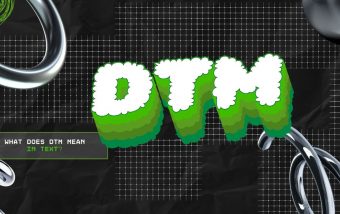Real Estate Link Building That Actually Works: Earn Local Authority, Rankings, and Better Leads Without Spam
Dec 10, 2025

Dec 10, 2025

Dec 10, 2025

Dec 09, 2025

Dec 09, 2025

Dec 05, 2025

Dec 05, 2025

Dec 04, 2025

Dec 04, 2025
Sorry, but nothing matched your search "". Please try again with some different keywords.


In today’s digital age, businesses face tough competition. They must capture the attention of potential customers, which is harder than ever. Amidst the noise and clutter, inbound lead generation is a powerful strategy. It attracts and engages prospects at the right time with the right message. They can create valuable content and experiences.
These will be tailored to their interests and pain points. This can help companies position themselves as trusted advisors. This sets up a strong foundation. It will help nurture leads and turn them into loyal customers.
This sets up a strong foundation. It will help nurture leads and turn them into loyal customers. These platforms offer unmatched opportunities. They let you reach specific audiences. You can also build brand awareness and drive traffic to your website or landing pages. When used well, social media and search ads can power your inbound lead generation. They let you connect with prospects seeking solutions.

Social media has become a must-have tool for businesses. They use it to fuel their lead generation. Each platform has its unique strengths. They offer opportunities to engage with B2B and B2C audiences.
For B2B lead generation, LinkedIn reigns supreme as the go-to professional networking platform. It allows companies to build relationships with decision-makers. They can also connect with industry influencers. They can also meet potential customers in their target markets. But Facebook and Twitter provide strong channels. They help B2C businesses connect with and reach their desired consumers.
Building an engaged audience and increasing brand awareness are crucial first steps. This can be achieved by:
Paid social advertising offers a targeted approach. It reaches precise audiences based on demographics, interests, behaviors, and more. Platforms like Facebook and LinkedIn have strong advertising capabilities. They let businesses show relevant ads to people likely to become leads.
Effective content strategies form the backbone of successful social media lead generation. A mix of content formats can captivate audiences. It can drive them to take desired actions, such as:
To optimize social media lead capture, businesses should implement the following best practices:
Businesses can use social media’s power. They can do this by using smart lead-generation tactics. These tactics help them attract, engage, and convert their ideal prospects. They become valuable leads. These lead to growth.

Social media captures attention and builds brand awareness. But search advertising provides a direct line to prospects who actively seek solutions. Paid search is powerful. It plays a crucial role in inbound marketing. Also known as pay-per-click advertising.
At the top of the funnel, good PPC ads can capture high-intent search queries. These come from potential customers researching products or services like yours. Compelling ad copy resonates with their pain points and desires. It increases the chance of a click to your website or landing page.
Once on your landing page, you need to optimize it. This is the key to turning hard-earned clicks into qualified leads. This can be achieved through:
Even for visitors who don’t convert initially, remarketing provides a second chance. By tracking website behavior, you can re-engage lost leads and visitors. You can do this with tailored ads and offers. You can do it as they continue their research across the web.
Also, search query data offers a treasure trove of insights. It can guide your content strategy. Analyzing popular search terms can reveal lucrative ideas. They can be topics, questions, and interests to add to your blog, videos, and whitepapers. This attracts and nurtures leads organically while complementing paid efforts.
With a unified approach utilizing:
Businesses can utilize the full potential of search advertising to capture qualified inbound leads ready to be nurtured toward closed sales.

Social media and search ads are powerful for lead generation alone. But the most impact comes from a unified, cohesive approach. It combines organic and paid efforts across platforms.
At its core, the key is to use unified audience data. It is key to refining targeting and delivering relevance. This includes:
Rich audience insights let you use the right content and calls to action. They are useful for every phase of the buyer’s journey.
However, an integrated strategy is incomplete without the tools and tactics. They are needed to continually track, measure, and optimize performance. This includes:
Businesses can use social media and search ads with smart targeting. They can also use precise content mapping and careful performance measurement. Doing so. They can maximize their ability to create, nurture, and convert more good leads.
Mastering lead generation through social media and search advertising requires continual learning. You also need to optimize it. Here are some best practices and pro tips to ensure your campaigns are set up for success:

Social media like Facebook, Instagram, LinkedIn, and X (formerly Twitter) enables you to reach potential audiences via their interests, demographics, or behavior. Here’s how you could expand them to their fullness:

Enabling advertising using search with Google Adwords and Bing Ads will enable you to target active people looking to try and find solutions that have an exact look to what your business is about. This is how one catches inbound leads who, currently, are surfing the internet for something they need today when they are searching in Google, Bing, etc.

You will get reasonable results for each on its own. You may amplify the best degree of generating inbound leads when you use both, as you shall see now.
Integrate the Retargeting Strategies by using search ads to reach a user who interacted with your social media ads and vice versa. Creates a holistic journey of your customer and multi-touch experience leads. Use Google Analytics or Facebook Pixel for tracking and measurement of performance across both platforms. Gains insights where the best leads are coming from hence how best to optimize their strategies.
In summary, mastering lead generation needs a strategy. It requires social media and search advertising. Understanding your target audience is key. Use the strengths of each platform. Continuously optimize campaigns. This will help businesses attract, engage, and convert high-quality leads. Succeeding today means staying ahead of trends and avoiding common mistakes. It also means using both beginner and advanced approaches.
Also Read
Nabamita Sinha loves to write about lifestyle and pop-culture. In her free time, she loves to watch movies and TV series and experiment with food. Her favorite niche topics are fashion, lifestyle, travel, and gossip content. Her style of writing is creative and quirky.
View all Posts
Real Estate Link Building That Actually Works...
Dec 10, 2025
Why Health-Conscious Consumers Choose Blockch...
Dec 10, 2025
How To Buy Xupikobzo987Model? Decoding The Mo...
Dec 09, 2025
Workplace Management EWMagWork: Is This Smar...
Dec 09, 2025
Social Media Stuff EmbedTree: Is This Digita...
Dec 05, 2025

